Shakespeare: A Life (41 page)
Read Shakespeare: A Life Online
Authors: Park Honan
Tags: #General, #History, #Literary Criticism, #European, #Biography & Autobiography, #Great Britain, #Literary, #English; Irish; Scottish; Welsh, #Europe, #Biography, #Historical, #Early modern; 1500-1700, #Entertainment & Performing Arts, #Performing Arts, #History & Criticism, #Shakespeare, #Theater, #Dramatists; English, #Stratford-upon-Avon (England)


British portraiture of about 1600-10. Though its origins are obscure,
there is a good possibility that it shows Shakespeare; he has greyish
eyes, brown moustache and beard, and a gold ring in his left ear. The
drawstrings of the shirt hang down over a black doublet. Once owned by
the Duke of Chandos, later by the Earl of Ellesmere, in 1856 the work
was the first picture to be presented to the National Portrait
Gallery.
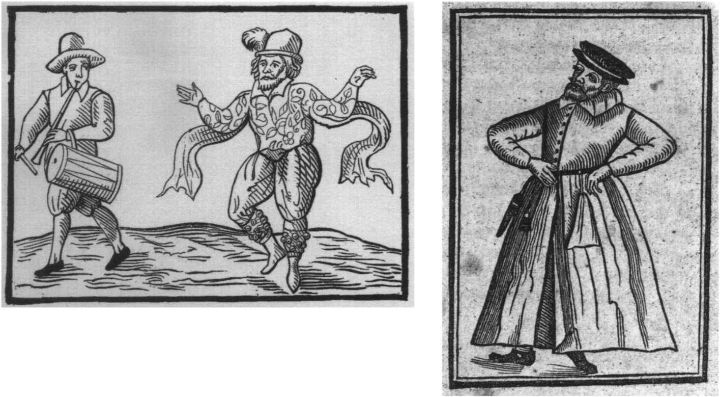
road to Norwich in 1600, and the dwarfish Robert Armin strikes a pose
in a long coat, in Armin's Two Maids of Moreclacke, printed in 1609.
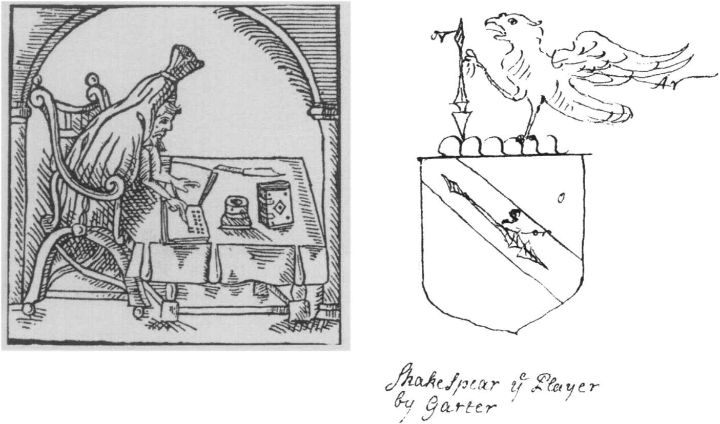
Greene rises from the grave to write again, in a cartoon of 1598.
(Below,right) The York Herald's disgusted note that Shakespeare, 'ye
Player', qualified for a coat of arms in 1596.
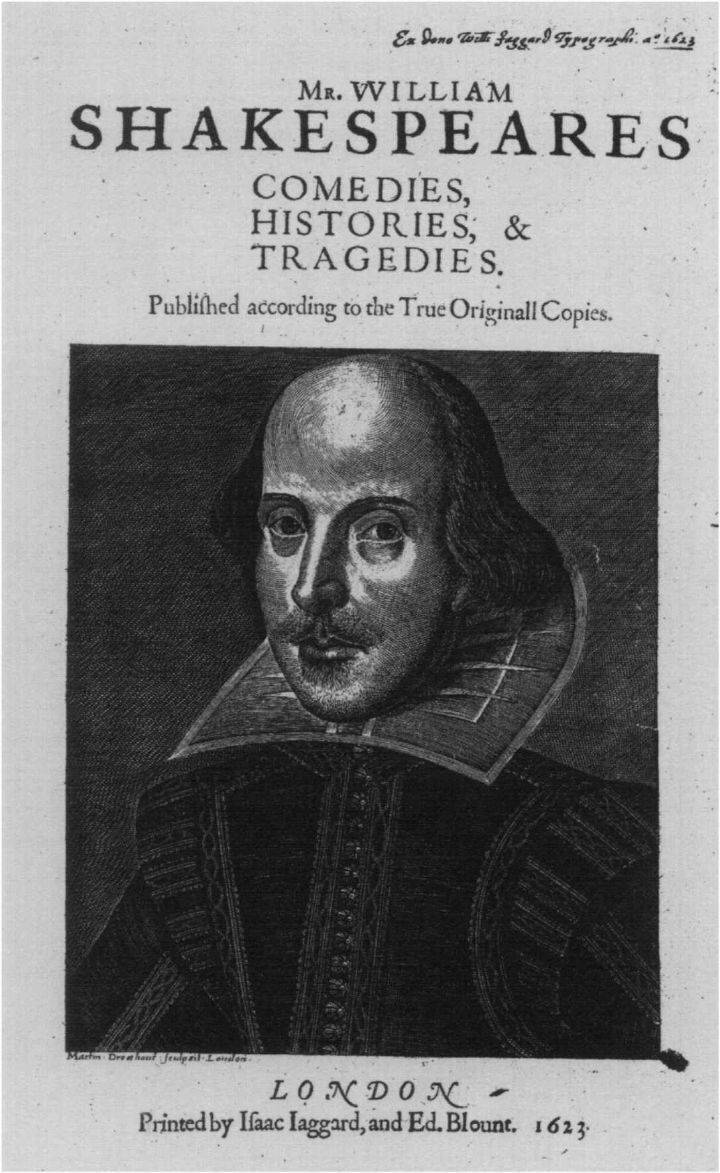
Augustine Vincent in 1623 with an inked inscription at the upper right
by the printer ' William Jaggard Typographi'. Martin Droeshout was
about 22 years old when he engraved Shakespeare's portrait.
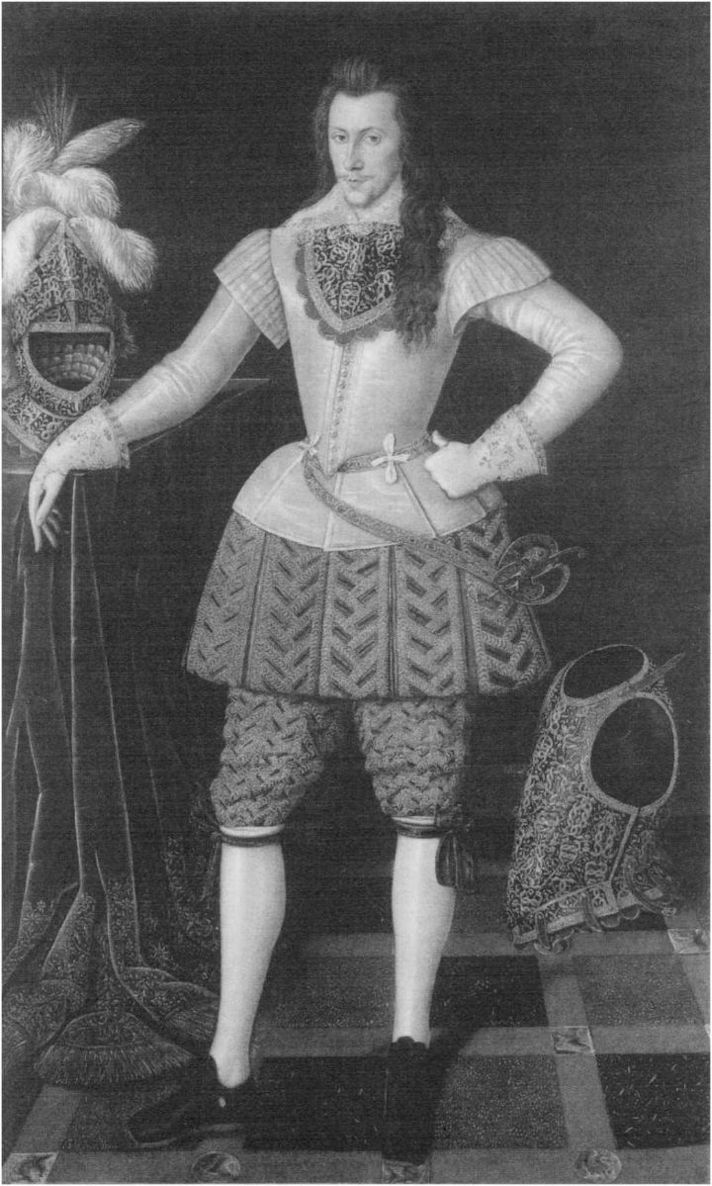
unknown artist, in 1600. 'The love I dedicate to your Lordship is
without end', Shakespeare told him in the open letter with
Lucrece.
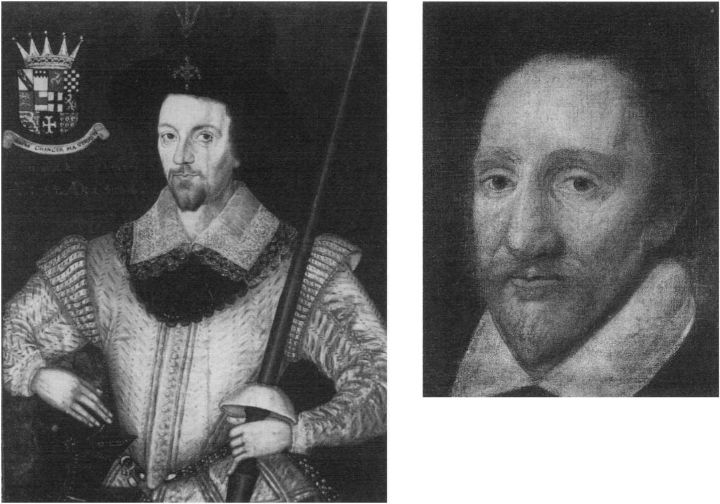

III, Hamlet, and King Lear. (Below, lift) Ben Jonson, who offered
friendship, suggestiveness, and goading rivalry, and (right) John
Fletcher, with whom Shakespeare wrote three late plays.
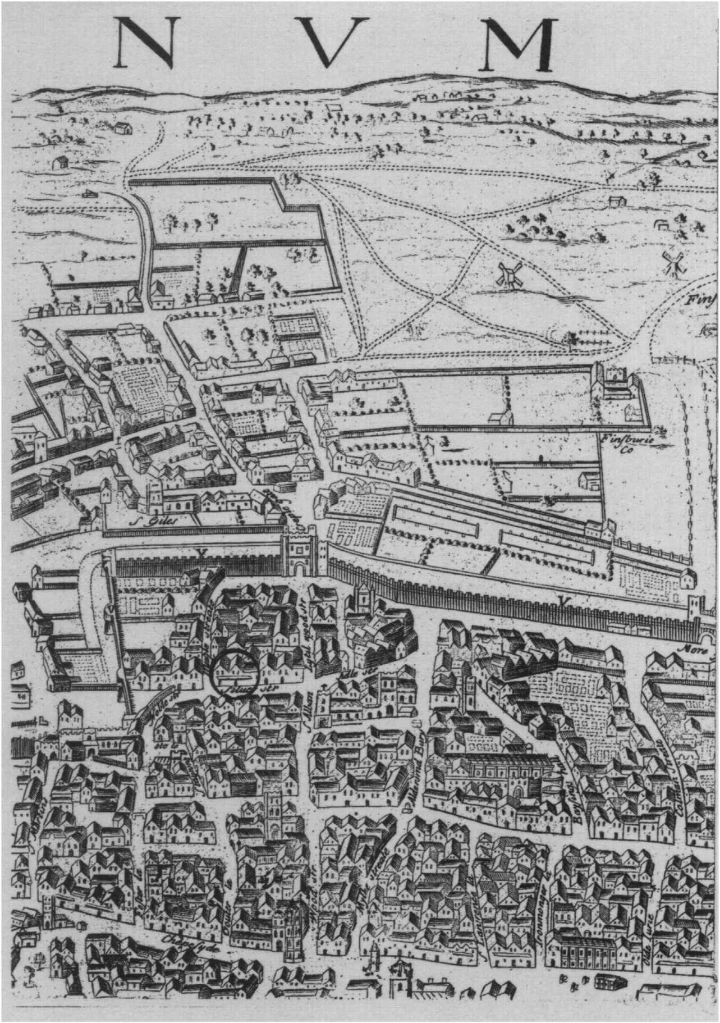
Civitatis Londinium
,
depicts London as it was in 1553-9. This is from a copy at the Folger
Library. The Mountjoys' house, where Shakespeare was living in 1604,
appears in conventionalized fashion at the corner of Silver Street and
Mugle Street not far from the city's walls, below the left-centre of
the picture. To the north lay two useful routes to the Midlands.
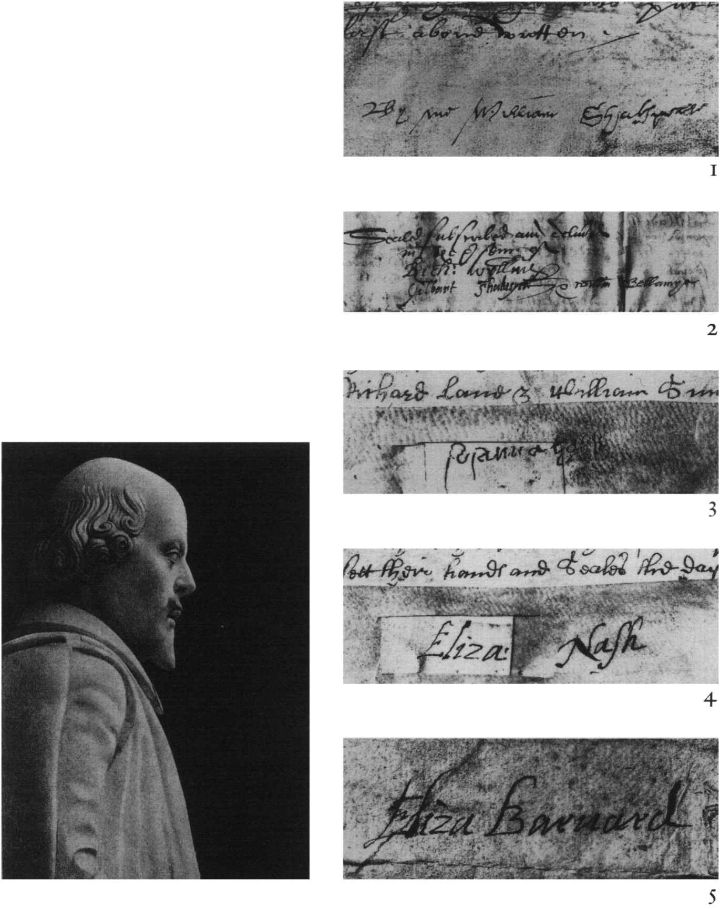
From top to bottom)
1. 'By me William Shakspeare'on the third sheet of his legal will. 2.
His brother Gilbert Shakespeare's hand in a neat 'Italian' style. 3.
The hand of Shakespeare's elder daughter Susanna Hall, and two
signatures of his only granddaughter: 4. Elizabeth Nash, and 5.
Elizabeth Barnard.
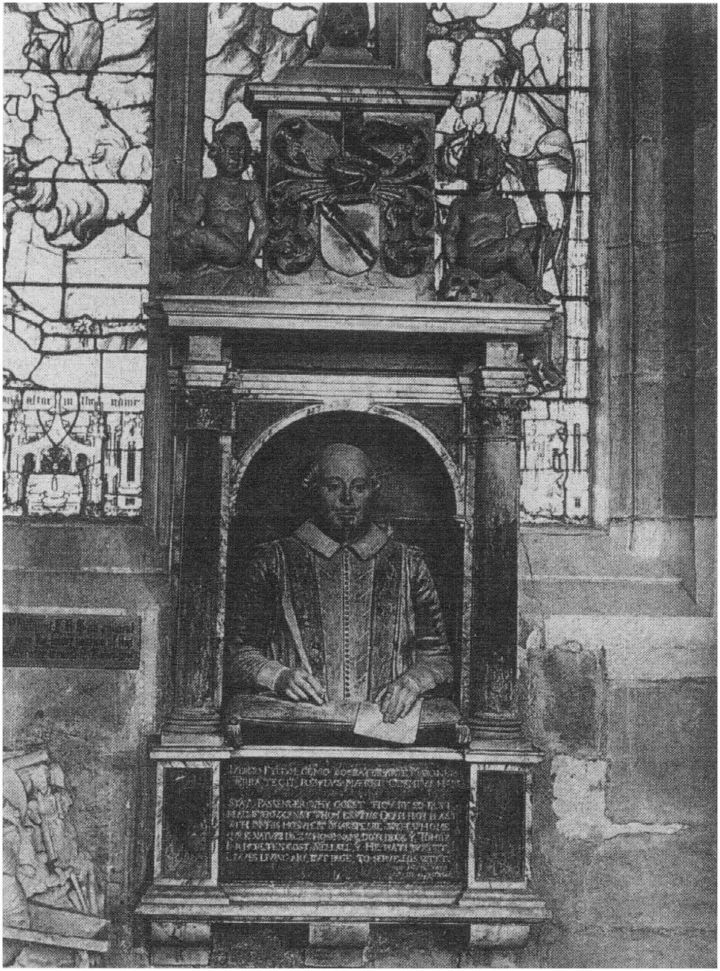
Below)
Shakespeare's Birthplace before it began to be restored in the 1850s.
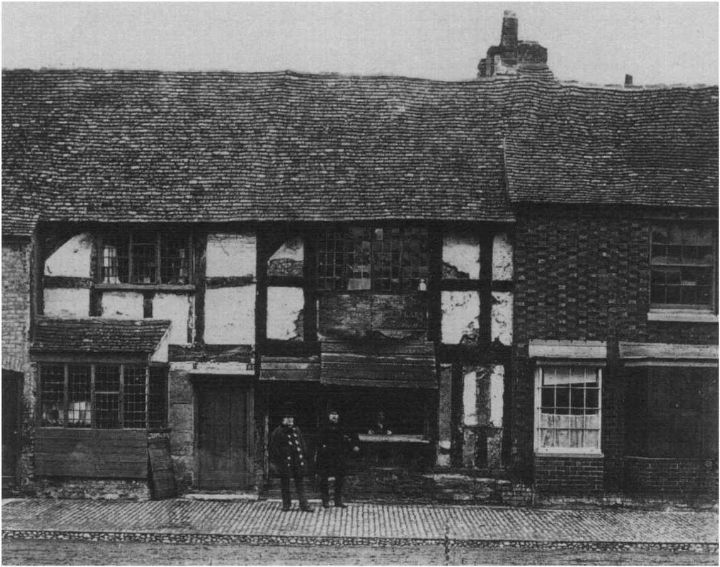
fused the town's welfare and funds with his own. Neither was on easy,
intimate terms with Shakespeare, who treated them with caution.
Should the poet invest in Shottery land? Old Adrian sees no gain to anyone in
that,
and wishes to get him to buy a share in the town's tithes, as Sturley
tells Quiney on 24 January. That will bring needed cash to the
Corporation and help the poet too, so it is up to Quiney to persuade
Shakespeare: 'By the instructions you can give him thereof and by the
friends he can make therefore', Sturley writes, 'we think it a fair
mark for him to shoot at and not impossible to hit. It obtained would
advance him indeed and would do us much good.
Hoc movere et quantum in te est permovere ne negligas
[don't neglect to move in this and, as much as in you lies, move deeply].'
25
But, probably without seeing Shakespeare, Quiney rushed back to
Stratford. Further news in his friend's letter was alarming. The town
was in an uproar with citizens 'assembled together in great number' to
attack those forcing up grain prices. One man, who had complained to
Sir Fulke Greville, said 'he hoped within a week to lead some of them
in a halter, meaning the malsters'. A local weaver trusted 'to see
them hanged on gibbets at their own doors'.
26
If a mob attacked Quiney's barn they could take torches to New Place,
too. Shakespeare's wife and daughters were in jeopardy, and this may be
the closest analogue to his showing later, in
Coriolanus
,
an intent Roman mob ready to riot over corn.
Stratford's grain survey, a few days after Sturley's letter, may have
pacified hot heads, and it shows that excess stocks have magically
vanished from barns. In an earlier survey, Sturley was alleged to hold
twenty-six quarters of malt and Quiney thirty-two of malt, and
fortyseven quarters of barley -- all of 632 bushels. But by 4 February,
Quiney's hoard on paper has shrunk to a mere fourteen quarters of
malt, and Sturley's barn is a place of moral purity and beatitude since
his holdings have dropped to only five quarters, half as much as his
friend Shakespeare holds!"
27
Still, the populace had come close to insurrection and the poet was
alarmed, or at any rate his investment plan changed. So far as we
know, he invested not a penny at Stratford for the next four years, or
until after his father's death and well into 1602. In a time of dearth
he
-241-